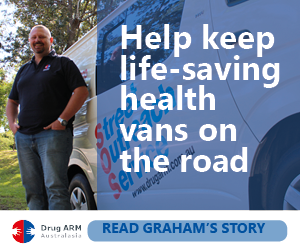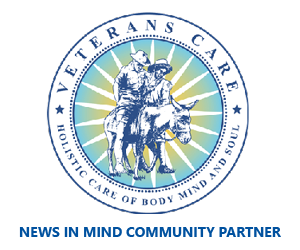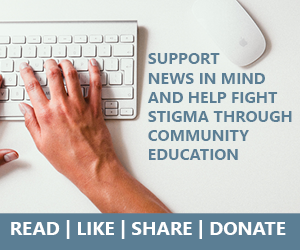hen he’s having a hard time coping, the 23-year-old Maryland man can get extra support with a few quick taps on his smartphone.
That takes him to the Big White Wall, an online service that provides help 24/7 to people who are struggling with problems such as depression, stress and anxiety. It offers educational resources and courses led by mental-health professionals. It also offers peer encouragement through virtual conversations. “Talkabouts,” they’re called.
The service, which has been running in the United Kingdom for nearly a decade, is now drawing attention from several U.S. health systems looking for ways to increase access, especially in rural areas with few if any psychiatrists, counselors or even social workers.
Digital behavioral health is increasingly viewed as a way for organizations to improve patients’ overall health, reduce unnecessary and expensive hospitalizations and comply with laws requiring insurers to provide mental-health benefits at the same level as benefits for other medical care.
Some technologies are narrowly focused, such as cognitive therapy sessions that people do on their own like they might use an online program to learn a foreign language. There are also myriad smartphone applications designed to help people track and manage their emotions. Some can alert a provider of a possible problem by monitoring how much an individual moves around or talks to others that day.
Thomas Insel, who just stepped down as director of the National Institute of Mental Health to join Google, says technology used the right way can transform access to mental-health care and improve the quality of services.
“This isn’t the fix for everything, but just a starting point when you realize that 55 percent of the counties in the United States have no mental-health personnel,” he said in an interview.
Big White Wall relies on sophisticated algorithms to tailor information to users, who can also take tests that assess depression and anxiety. They can write or draw on the service’s virtual bricks to share their emotions. Some bricks, marked by words like “trapped” or “no future,” reveal pain and despair.
“The ones who find it most useful are the ones who have day-to-day variation in their moods and limited ability to cope,” said Supriya Narang, chief medical officer at Baltimore-based Mosaic Community Services. “Those people have found it is a really important piece they can rely on.”
Mosaic, which provides mental-health services to about 25,000 people a year, signed on to Big White Wall in 2014 and offers it without charge to clients such as that 23-year-old Maryland man. He sees a therapist at one of the organization’s outpatient clinics, but he likes the convenience of Big White Wall and the way trained “wall guides” help foster conversation.
“He really liked that when someone started a ‘talkabout’ and people didn’t get involved, that a ‘wall guide’ would jump in” to respond, said Cindy Eikenberg, a Mosaic spokeswoman who relayed the man’s experience because he wanted his privacy protected. “He found the service to be very helpful.”
Developed in England in 2007, Big White Wall has been officially endorsed by the National Health Service there and used by more than 36,000 people across the United Kingdom, including current and former military personnel. Independent studies have shown its effectiveness in improving individuals’ ability to manage their mental health, with a 2009 review finding that 95 percent of users reported an improved sense of well-being as a result of their experience.
Based on the initial wording on a brick, the service will soon be able to gauge the severity of distress in cases of depression, stress or anxiety, founder Jen Hyatt said. Licensed social workers working under the supervision of psychiatrists and psychologists are on duty around the clock to intervene as needed. All users have access to “Report” buttons to alert staff to any message they find concerning.
In the United States, “a couple thousand people” are on Big White Wall, said managing director Ileana Waite. Access is only available through participating health organizations and does not yet include the one-on-one talk therapy offered in Britain. Here, organizations typically pay a flat fee to cover access.
Kaiser Permanente’s Northwest region has been testing the service in parts of Oregon for the past year. In October, Kaiser broadened the pool to other parts of the state, so 125,000 members now have free access, Waite said.
A Kaiser representative declined to share results, saying the health plan is still evaluating the technology.
In Texas, the regional health plan Scott and White will begin offering the technology on Monday to 42,000 employees and privately insured members. Executives hope to expand to more of the plan’s 220,000 members later.
Texas has one of the most severe shortages of psychiatrists in the country. Hardest hit are rural areas in the central part of the state, where Big White Wall will be available across two counties. Consumers “have to travel quite a distance to see a behavioral health practitioner, especially psychiatrists,” said Duke Ruktanonchai, medical director for behavioral health at Scott and White Health Plan.
Denver-based Catholic Health Initiatives, which serves 54 million people from Washington state to Kentucky, hopes to provide the service to “a couple hundred thousand” users within the next two years, said Win Vaughan, its interim president of virtual health services.
The technology isn’t intended for people with severe illness or thought disorders. Nor does the online support aim to be a substitute for face-to-face sessions. While Big White Wall is accessible through personal computers, tablets or smartphones, people without easy online access are effectively shut out.
The service’s name is meant to convey that human emotion is infinite, that everyone can start with a blank canvas and, according to its founder, that a wall can provide shelter and support. At the same time, Hyatt says, it symbolizes the barriers that people sometimes need to break through to improve mental health.
The emotions that users share online are sometimes more plaintive than painful. A random collection included one brick with a drawing of a teacup alongside a question: “How is it possible to be in love with someone and not even know how they like their tea?”
And another musing said simply: “I would love to get to a point in my mental health where i can stop thinking about my mental health.”
This article first appeared on ‘Chicago Tribune’ on 22 November 2015.























